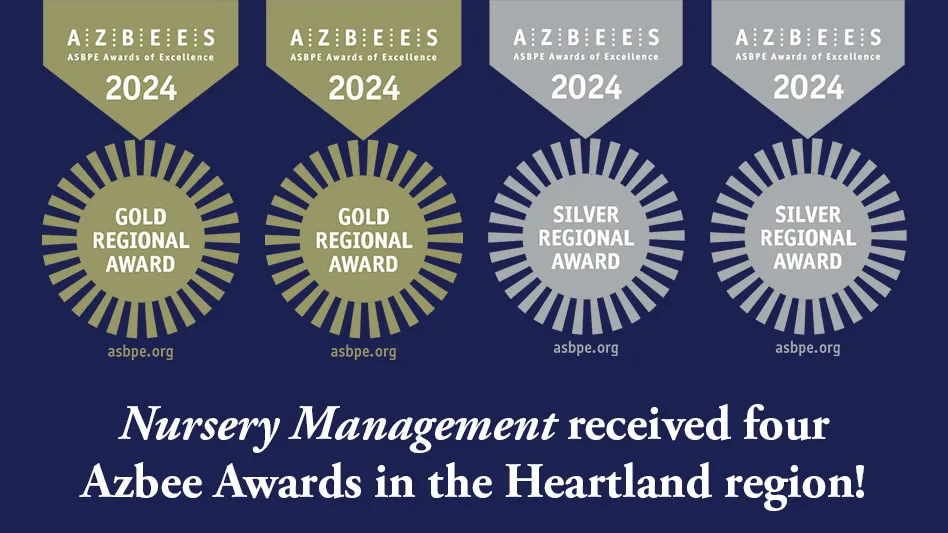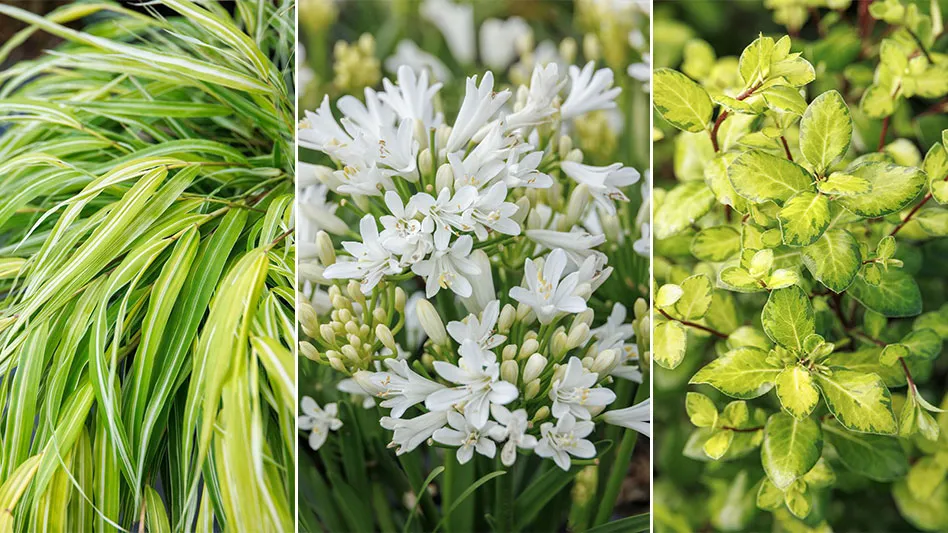
Scouting for nursery and greenhouse pests takes skill and time. It’s a critical piece of any integrated pest management program. By scouting, growers detect insects and mites while the population is small. Researchers have discovered there are established economic and environmental benefits from scouting nursery crops, such as saving production costs and labor hours.
If your operation is seeing more than average pest pressures in any given growing season, make sure your scouting techniques are polished and you’re giving crews the proper training.
Scouting begins before a crop enters your operation. If you’re propagating, evaluate the entire greenhouse one month prior to the introduction of a crop. Look at weeds in and around greenhouses and hoop houses, drainage problems, algae build-up, overwintered plants and debris under benches. Crops growing in adjacent greenhouses or outdoors should be recorded. When a crop arrives, scouts should inspect one-third or more of the plants.
Section off your production area into manageable portions based on location, size and crop or variety and scout them separately. It is more practical to deal with blocks that are 10 acres or smaller and contain plants of the same variety, age and spacing. Walk a transect when scouting to ensure you view plants from the edge and inner portion of the block. Common transects are walking in an X or a W pattern to cover the whole field. Change the path you walk each time you scout to inspect new areas. Re-examine hotpots where you have historically encountered high pest pressure. Scouting weekly is recommended. If degree day tools or biological information is available to predict the emergence or arrival of certain pests, use them to gauge when you might scout more intensively.
One of the greatest allies a grower can use to be an effective scout and pest manager is historical and forecast weather data. Degree day models are available for many pests and can be tracked using locally accurate degree day information. Some models even use forecast data to estimate when important events, such as egg hatch, adult flight or spore release, will occur. This information can inform you of when to intensify your scouting for certain pests and disease, when to apply a pesticide to optimize treatment and when the ideal conditions might occur to apply a spray. Check with your local extension office for degree day models or visit http://uspest.org for a custom degree-day mapping calculator for 48 U.S. states.

Sticky cards and traps
Sticky cards should be in your IPM toolbox for pest detection. Blue cards may be more attractive to thrips (and even shore flies), but it’s more difficult to see thrips against the blue background. Yellow sticky cards are used to detect infestations of adult flying insects. Attach each card to a stake with a clothes pin. Another option is to glue two clothespins back-to-back. Attach one end of the clothespin to a stake and clip the card to the other clothespin. This will allow you to move the card upward as the plant matures. For general monitoring, attach sticky cards vertically just above the plant canopy. For fungus gnats, place cards horizontally just above the soil surface or lay them flat on rims of pots. Aphids and thrips tend to be caught on the bottom half of the traps. Leafminers are caught more often along the top, and leafminer wasps and whiteflies tend to be spread uniformly over the trap. Aphids tend to be caught in the middle vertical columns. Since insects are not distributed evenly horizontally across the trap, columns counted should be vertical towards the middle of the trap.

In greenhouse production, each yellow sticky card should be numbered and placed at the minimum rate of one card per 1,000 square feet. Space the cards equally throughout the entire range in a grid pattern. Place cards near all entryways and vents. Small greenhouses (less than 4,000 square feet) can be scouted as one unit. Larger greenhouses should be divided into 2,000- to 3,000-square-foot sections. Change the cards weekly and place new cards in the same areas of the production area to track pest trends.
In outdoor production, traps should be hung at 4-6 feet above ground level in the nursery but can be placed at the office or other convenient location nearby. Traps can also be hung from limbs of trees in the nursery if duct tape or another protective coating is used to prevent bark damage.
Use one trap per insect species. Traps for different insect species should not be placed close to one another; place them at least 30 feet apart. To prevent cross-contamination when placing lures for more than one species, do not handle lures. The compounds in pheromone lures can penetrate many substances. Use disposable gloves, disposable forceps or shake lure out of the packaging onto the trap. Trap results can vary with location and microclimate; therefore, it is best to place more than one trap for a given pest in the nursery. Use at least one trap per 20 acres per insect species. Store extra lures sealed in the refrigerator or freezer. Replace lures during the season according to manufacturer’s recommendations.

Monitoring and keeping records
Begin inspections at the bottom of the plant and proceed upward, from older leaves to younger leaves to new growth. Special attention should be paid to buds and blooms. Pots should be tipped sideways for inspection of the underside of the leaves where many pests reside. Root examinations should be performed on crops that are highly susceptible to root disease by inverting and removing the pot.
Identify and record pest numbers in a notebook. Compile weekly summaries and itemize information for each greenhouse, hoop house or nursery bed according to the pests detected, the counts, and any unusual circumstances found.
Detailed records of any pesticide application should be kept to compare with previous records to see if fewer applications have been made or if a less toxic chemical has been substituted. These records should include the following information:
- Date of spray application.
- Name, classification, amount of active ingredient, and registration number.
- Amount of material and water mixed for the application.
- How much of the pesticide was applied.
- Where the pesticide was applied.
- Square feet or number of pots treated.
- Type of application method (wet spray, fog, etc.).
- Applicator’s name.
- Labor hours.
Over time, population trends will emerge and provide direction for your pest management program.
Sources: University of Connecticut Extension, Leanne Pundt, (bit.ly/pest_scouting); Oklahoma State University Cooperative Extension, Mike Schnelle and Eric Rebek, (bit.ly/greenhouse_scouting); Michigan State University Extension (bit.ly/IPM_Scouting); University of Tennessee Extension (bit.ly/Monitoring_Scouting).
Consult and follow pesticide labels for registered uses. If any information is inconsistent with the label, follow the label. UConn Extension does not guarantee or warrant the standard of any product referenced or imply approval of the product to the exclusion of others which also may be available. UConn Extension, UMass Extension, OSU Extension, Michigan State University, and the University of Tennessee Extension are not endorsing any product or company.

Explore the May 2019 Issue
Check out more from this issue and find you next story to read.
Latest from Nursery Management
- Proven Winners introduces more than 100 new varieties for 2025
- CIOPORA appoints Micaela Filippo as vice secretary-general
- Registration opens for Darwin Perennials Day
- April 2024 issue recap
- U.S. Department of Labor finalizes farmworker protection rule
- Azo Root is now available from Harrell’s
- Smith Gardens assumes operations of Skagit Horticulture
- Garden Media Group announces the fifth annual Women in Horticulture Week





